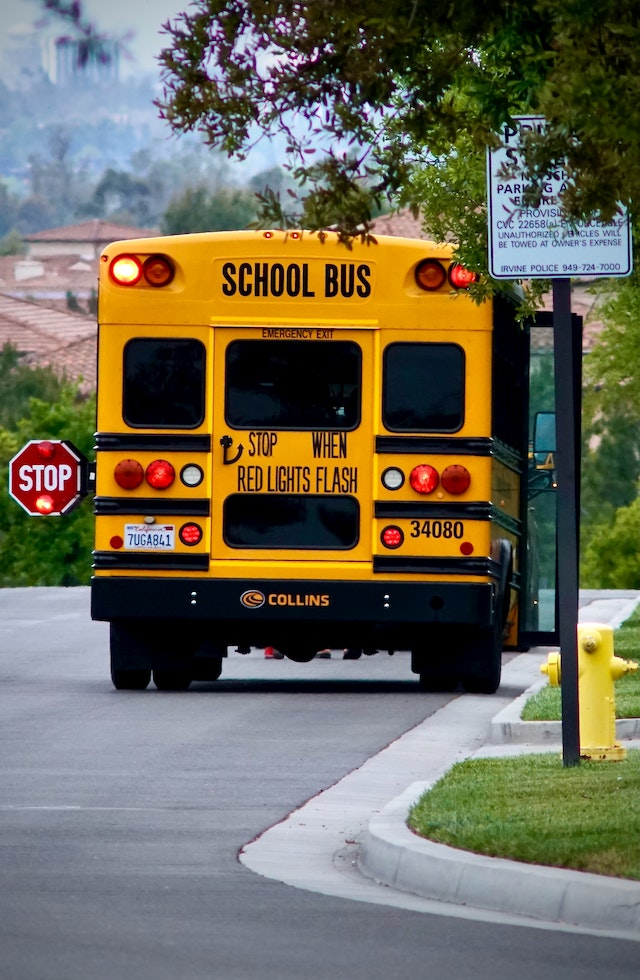Introduction:
In our fast-paced world, convenience often takes precedence over environmental concerns. One area where this is evident is the daily ritual of parents driving their kids to school instead of utilizing the readily available transportation options provided by public schools. The seemingly innocent act of dropping off kids at school may come with a hefty price tag for the environment, contributing to wasted fuel and increased carbon emissions. In this blog post, we will delve into the numbers surrounding the issue, exploring the impact of parental transportation habits on both a micro and macro scale.
The Landscape of Education:

Before we dive into the environmental repercussions, it’s essential to grasp the scale of the educational system in the United States and Canada. These two nations host a vast network of public and private schools, each catering to a diverse range of students. In the United States alone, there are approximately 98,000 public schools and over 34,000 private schools, catering to the educational needs of millions of students.
Public Transportation: A Neglected Resource
Public schools across North America have long invested in school bus systems to efficiently transport students to and from school. These buses are designed to accommodate a large number of students, significantly reducing the number of individual car trips and the associated environmental impact. However, the convenience of personal transportation often overshadows the benefits of these public services.
The Environmental Toll of Parental Drop-offs:
- Wasted Fuel:
Every time a parent drives their child to school individually, fuel is being consumed inefficiently. Consider the scenario: a compact car carrying a single student to school. The fuel efficiency of the vehicle is compromised due to the short distance and frequent stops. Extrapolate this over millions of parents doing the same across the continent, and the wasted fuel becomes staggering. - Carbon Emissions:
The environmental cost goes beyond the fuel burned; it extends to the carbon emissions released into the atmosphere. Cars emit carbon dioxide, a greenhouse gas that contributes to climate change. The cumulative effect of parents choosing personal transportation over school buses amplifies the carbon footprint of the daily school run.
Quantifying the Impact:
Let’s break down the numbers to understand the magnitude of the issue. On average, a school bus can transport around 50 students. If each of the approximately 98,000 public schools in the United States were to use their school buses efficiently, millions of individual car trips could be eliminated each day.
Assuming a conservative estimate of 100 cars saved per school per day, we’re looking at a potential reduction of millions of car journeys nationwide. This equates to a significant decrease in fuel consumption and carbon emissions, offering a glimpse of the positive impact achievable by embracing public transportation.
Economic Savings and Environmental Gains:
The advantages extend beyond environmental considerations. When parents collectively opt for school buses, there is a direct economic benefit. Families save on fuel costs, and the nation, as a whole, spends less on importing and refining gasoline. The money saved could be redirected towards improving educational facilities or other community projects.
Additionally, fewer cars on the road mean less traffic congestion, leading to smoother traffic flow and reduced wear and tear on roads. This, in turn, translates to lower maintenance costs for local municipalities.
A Call for Conscious Transportation Choices:
The solution to this environmental challenge lies in a collective shift in mindset. Parents, educators, and policymakers need to collaborate to raise awareness about the benefits of utilizing school transportation services. Implementing initiatives that incentivize the use of school buses and discourage individual transportation can be a step in the right direction.
- Education Campaigns:
Schools can launch campaigns to educate parents about the environmental impact of individual drop-offs. Workshops, seminars, and informational materials can highlight the collective difference that a small change in behavior can make. - Incentivizing Public Transportation:
Local governments can provide incentives for families who choose to use public transportation. These incentives could range from reduced registration fees to tax breaks, making the option financially attractive for parents. - Infrastructure Development:
Investing in robust public transportation infrastructure is crucial. Ensuring that school buses are a convenient and reliable option for parents will naturally encourage their use.
Conclusion:
The seemingly mundane act of parents driving their children to school has far-reaching consequences for the environment. The numbers are stark, but so is the potential for positive change. By embracing the existing public transportation systems, we can collectively reduce our carbon footprint, save money, and create a healthier environment for future generations. It’s time for parents to consider the bigger picture and make conscious choices that benefit not only their families but the planet as a whole.
